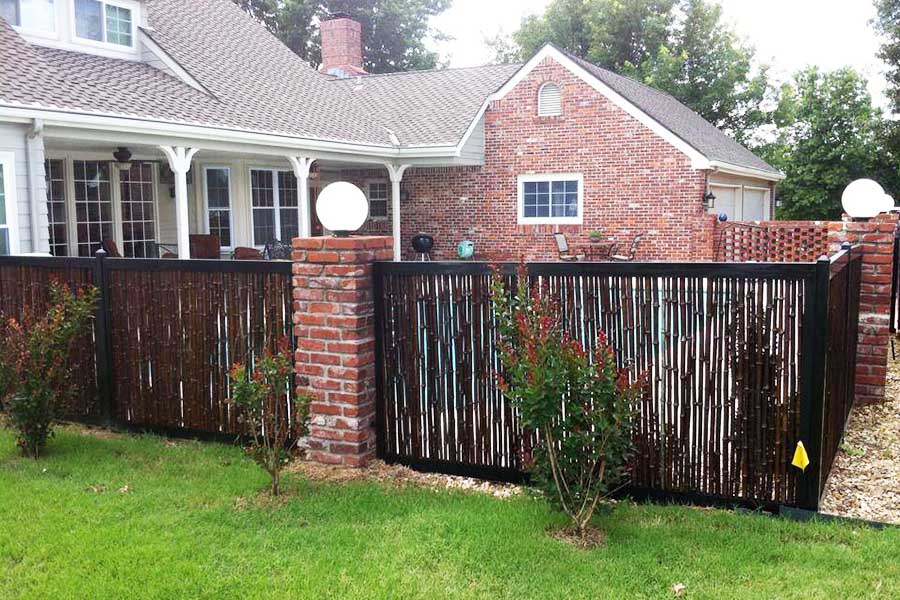All Categories
Featured

A fence is an important addition to any kind of home, giving protection, privacy, and enhancing the overall aesthetic allure of your home or company. Nevertheless, like any outside structure, a fence will normally put on down over time because of exposure to the aspects, accidents, or just age. Identifying the signs that your fence needs to be changed can assist you avoid further damages and keep the security and appearance of your property. Here are some crucial indications that it's time to change your fence.

- Visible Damage or Damage
One of one of the most evident signs that your fencing needs to be changed is visible damage. Whether it's from weathering, mishaps, or parasites, any major cracks, splintering, or missing out on boards can dramatically lower the architectural integrity of your fencing. If the damages is considerable and exceeds simply a couple of repairs, changing the whole fence might be more affordable in the long run.
- Leaning or Sagging
A leaning or drooping fencing is a clear sign of a problem. In time, the rails and posts can change due to moisture, rotting, or inadequate setup. If your fencing is no more standing straight or leaning at an angle, it's an excellent sign that the structure is compromised, which may call for a full replacement. Even if the fence appears to be leaning somewhat, maybe a sign of underlying structural problems that might worsen with time.
- Decaying or decaying Wood

Wood fencings are specifically prone to rot and decay, particularly in locations that experience high levels of moisture or humidity. If you notice that parts of your wood fencing are soft, blemished, or have noticeable mold, these are all indicators of rot.
- Rust and Rust (For Steel Fencings)
If you have a metal fence, corrosion and rust are usual signs of damage. If you discover any kind of substantial weakening or big areas of corrosion, it might be time to take into consideration replacing your metal fence.
- Fence No Longer Fulfills Your Demands
One more factor to replace your fencing might be that it no more serves its intended function. Over time, your needs might transform-- maybe you require a higher fencing for more privacy or a more powerful one for raised security. If your fencing no more meets your needs or does not line up with your present choices, it may be time to update to a new, more functional style.
- Fading and Discoloration
While fading and discoloration are generally cosmetic concerns, they can still indicate that your fencing is maturing. Exposure to UV rays and extreme weather condition can create fences to lose their original shade, making them look worn and dull. If the fading is comprehensive and you've currently attempted cleaning up and staining the fence, it might be time to replace it to recover the look of your home.
- Regular Repair Work
If you discover on your own frequently repairing your fencing, it might be a sign that the fence is nearing the end of its lifespan. While minor fixings can prolong the life of a fencing, frequent solutions may suggest that the framework is no much longer stable. In this situation, it might be a lot more economical to replace the entire fence as opposed to remaining to purchase repair services.
Verdict
Replacing a fencing is a substantial investment, but it is necessary for preserving the privacy, security, and curb charm of your building. If your fencing is showing indications of damage, rot, leaning, or other structural problems, it's crucial to examine whether a substitute is required. By recognizing these indication at an early stage, you can make educated choices about when to change your fence, ensuring your property remains protected and aesthetically appealing for several years to find.
Latest Posts
Uncover Top Auto Repair Care offered by Montclare Auto Repair – Quality Service Today
Published May 29, 25
1 min read
Join WyHy Federal Credit Union – Smart Money Management for Your Money Goals
Published May 25, 25
1 min read
Uncover Reduce Expenses on Car Maintenance with Montclare Auto Repair’s Special Deals
Published May 23, 25
1 min read
More
Latest Posts
Uncover Top Auto Repair Care offered by Montclare Auto Repair – Quality Service Today
Published May 29, 25
1 min read
Join WyHy Federal Credit Union – Smart Money Management for Your Money Goals
Published May 25, 25
1 min read
Uncover Reduce Expenses on Car Maintenance with Montclare Auto Repair’s Special Deals
Published May 23, 25
1 min read